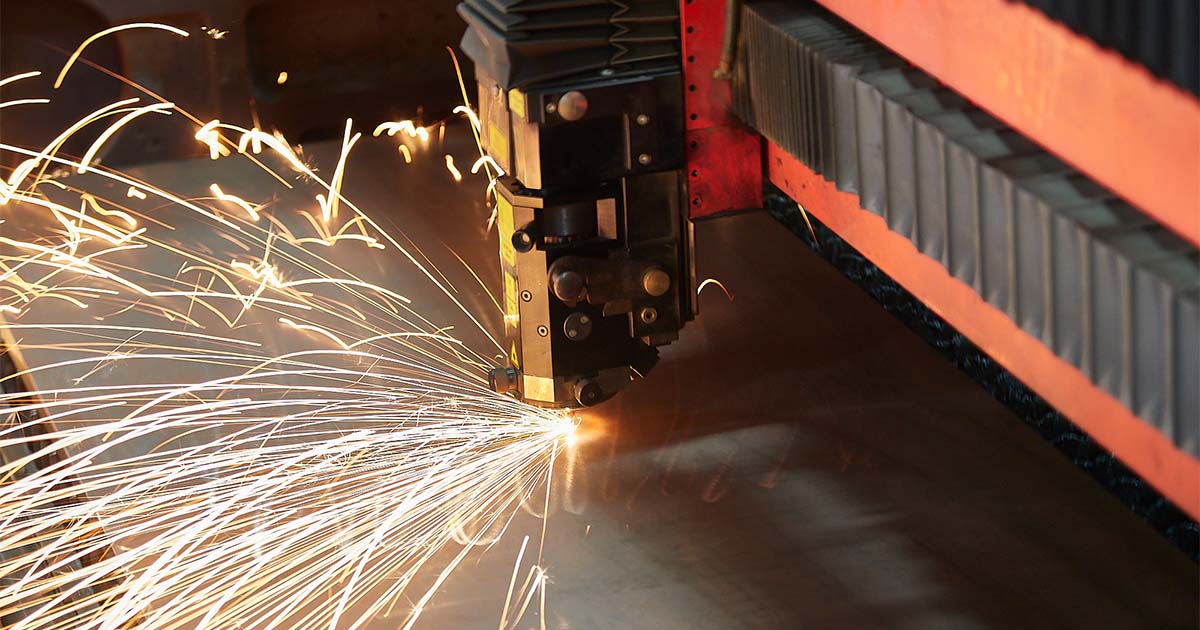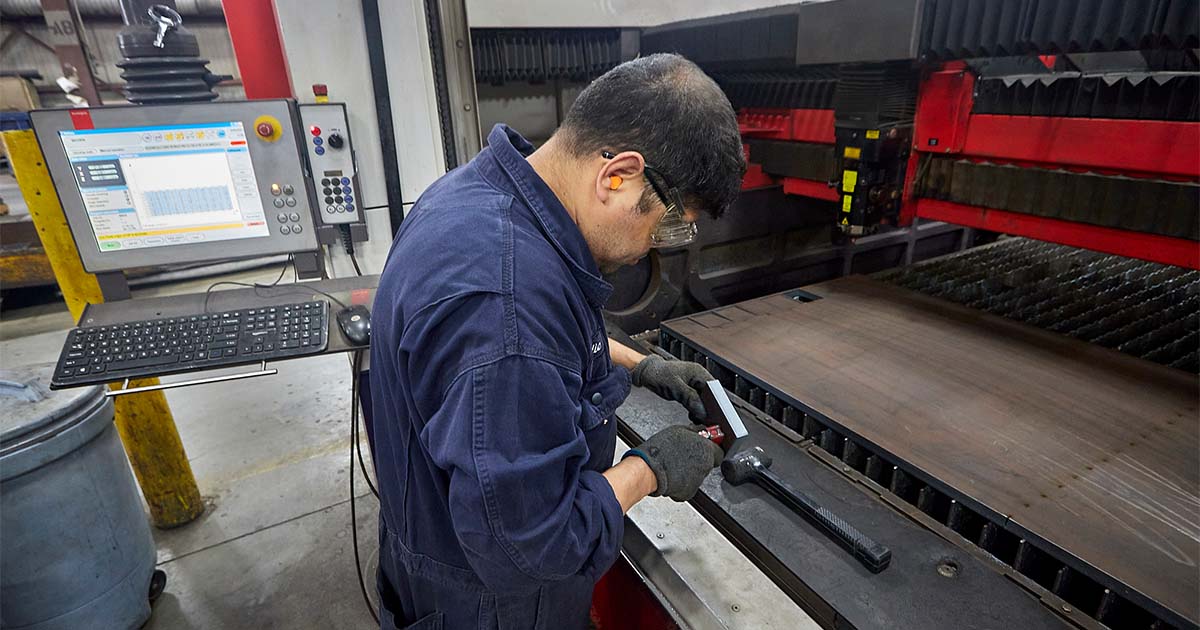
We collect basic website visitor information on this website and store it in cookies. We also utilize Google Analytics to track page view information to assist us in improving our website.
If you’re passionate about metal cutting or just keen to learn more, you’ve landed in the right place.
For over 38 years, Amber Steel has been at the forefront of metal cutting services, specializing in laser cutting, flame cutting, and plasma cutting. Our expertise has carved a niche in this cutting-edge industry, delivering precision and excellence across industrial projects big and small.
In our blog, we’ll share a mix of useful tips, innovative applications, our thoughts on sustainability in steel cutting, and more. Expect stories from the cutting floor, insights into how our processes can streamline projects across industries, and a few lessons we’ve learned along the way.
While we keep some of our trade secrets under wraps, this blog is designed to offer valuable nuggets of wisdom that you simply won't find anywhere else. Whether you’re a professional in the industry or someone fascinated by the possibilities of metal cutting, you'll find something of value here.
So, stick with us as we delve into the finer points of metal work. We’re glad to share our insights and lead discussions that matter to our industry.
How precision metal cutting propels the aerospace industry, from constructing lighter frames to enhancing aerodynamics.
The role of advanced metal cutting in automotive manufacturing, driving innovations in vehicle design and efficiency.
All about the robust and versatile process of flame cutting, ideal for tackling thicker metals with precision and ease.
Discover the art of crafting metal furniture, where cutting techniques meet design to create both functional and aesthetic pieces.
A behind-the-scenes look at the mechanics of metal cutting technologies and the science that makes them tick.
Laser cutting is where extreme precision meets efficiency, allowing for intricate designs and clean finishes.
The critical role of precise steel cutting in developing reliable and intricate medical devices.
How steel cutting supports the oil and gas industry with components that withstand extreme environments and pressures.
Known for its speed and versatility, plasma cutting slices through conductive metals with hot plasma.
Safety first! Tips and insights on maintaining a safe environment while handling powerful metal cutting equipment.
The backbone of construction, where steel fabrication and cutting technologies create frameworks that shape skylines.
Sustainability
A look at sustainability in metal cutting, focusing on practices that reduce waste and conserve energy to protect our planet.

Laser cutting – a process that, not surprisingly, uses laser energy to cut through various materials. We’ve written extensively on the subject, but something we’ve yet to touch on is the importance of parts design and best practices for laser cutting efficiency.
Laser cutting is a non-contact process that results in extremely accurate and dimensionally cut materials. By its very principle, it works through melting and burning through the material in question. A jet of air then blows away the melted materials, leaving behind a clean and smooth surface free from debris and sharp edges.
Despite the laser cutting process being precise and cost-effective, there are several design tips to consider before you move on to your next project. These considerations are essential for those operating in the industry, and luckily, Amber Steel has all the tips and tricks you need.
Preparing your part design for production saves both time and ensures your final product lives up to both expectations and industry regulations. Luckily, optimizing your part design isn’t complicated in theory.
Before you begin your next project, check for these common design flaws:
First, ensure your file is two-dimensional and in vector format. All objects must be on the same layer, and you must remove any stray points, complicated lines, or empty objects. Make sure to check for accidentally intersecting lines and use inch units at a 1:1 scale.
If shapes aren’t properly connected end to end, then the laser isn’t going to be able to follow the path the way you want. You should review your file in Outline mode (depending on your chosen design software) to ensure these missed areas are easier to spot.
Everything can impact your project, including the material thickness, which directly affects how detailed your design is. The thickness could range from 1 to 10 mm (about 0.39 in). For example, engravings require a material thickness that isn’t too thin to achieve the best results.
Otherwise, the laser could very well cut through the material, resulting in poor or even failed end-product. That said, if your project intends to use more flexible parts, then a thin material could be a great choice. Consider your project.

Laser cutters generally only support vector files. Vector files refer to digital graphics that are defined using mathematical formulas (or vectors) rather than pixels.
Designs that don't utilize vectorized drawings can pose an issue when it comes to laser cutting, as they simply aren't adequate when it comes to creating an object using laser cutting. The reason is the lack of necessary information required to enable the machines to be able to cut or engrave. This is where vector files come in.
Vector files are essential for achieving precipice and scalable products. Laser cutting machines rely on vector paths to guide the laser accurately during the cutting, scoring, and engraving. This ensures the cutting path is executed smoothly and eliminates jagged edges, producing clean and precise products.
Kerf is the small amount of material that vaporizes during the laser cutting process, leaving a gap. This phenomenon is similar to other cutting methods, such as using a blade on wood, where the thickness of the blade affects the cut. Laser beams also have thickness, contributing to kerf when they burn through materials.
Laser cutting is valuable for creating parts that fit together precisely in assembly. To ensure a good fit, designers must account for the kerf. Start by subtracting half the kerf size from the outer frame and add the remaining half to the inner sections.
Selecting the right node positions is crucial for parts that need to remain connected after assembly. Nodes concentrate friction at specific points, preventing parts from easily coming apart. Placing nodes opposite each slot and adjusting their number according to slot length reduces tension and ensures smooth interlocking.
Node width should match the material's density, with denser materials requiring narrower nodes to optimize the laser cutting process.
Choosing the right part shape is essential for efficient laser cutting. For example, sharp 90-degree corners can decrease cutting quality as the laser slows down and may cause burning or material loss.
Opting for larger radius corners allows for smoother transitions, faster cutting speeds, and improved part quality. These design considerations are critical to minimizing production costs and maximizing efficiency.
When it comes down to design practices, there are several different considerations to take into account:
When you use a laser to process parts, you must be aware that a high-intensity light source generates a laser beam so hot that it can melt metal in a fraction of a second. Subsequently, any part you process with a laser is exposed to extreme heat, creating a heat-affected zone (HAZ) along the cut's edge.
As far as fabricators are generally concerned, this HAZ is a non-issue, but in other fields – such as aeronautics (study of the science of flight) – it can pose several issues. There are critical parts in these industries that are typically not laser cut because the design engineers can’t take the risk that the metal can develop micro fissures that could create a problem in the future.
Any laser-processed part needs to have a taper of some sort because the laser beam is not usually perfectly shaped; rather, it’s more like an hourglass. When using thinner materials, the taper is so minimal that it usually isn’t a problem, but it can become one when the material gets thicker.
Fabricators must consider tapering when the machine tool builders have developed technology that improves cut quality, all while reducing the taper amount in thicker materials.
The primary advantage of using a laser to process sheet metals is it can create any conceivable shape. The only real limitation to keep in mind is the part size. However, one consistent part design error is not properly considering bend reliefs drawn into parts.
Typically, with thin-gauge material, these reliefs are too thin to achieve a proper cut straight off the laser. This issue happens because the assist gas travels the path of least resistance, generally the first segment of the laser's path. When the laser travels back to the other side of the bend relief, the melted material isn't ejected properly, resulting in dross (impurities that form on the surface of metals during melting or processing) forming on the relief edge.
Whether using a traditional CO2 laser or solid-state laser, fabricators need to consider the same factors to ensure the reliability of the cutting process and achieve the maximum result.
For example, if the part is made with a 90-degree corner, the time needed for cutting increases the part quality. When laser cutting, the cutting head must slow down at sharp corners, which can lead to overburn and the formation of dross. In some cases, it may even completely burn away the corners. To mitigate this, design engineers should aim for larger corner radii whenever possible. This allows fabricators to enhance cutting speed and improves the quality of the parts produced.
Parts design is an essential part of the fabrication process, and ensuring the best possible efficiency for laser cutting involves considering it. Laser cutting technology has made strides over the last few years, but some things remain the same; the necessary working parts are all a part of the equation to the best possible result and shouldn’t be taken lightly.
Luckily for you, Amber Steel offers cutting-edge services, such as laser cutting, plasma cutting, flame cutting, and much more. Contact us for more information on how we can help you make the most out of your next fabrication project.